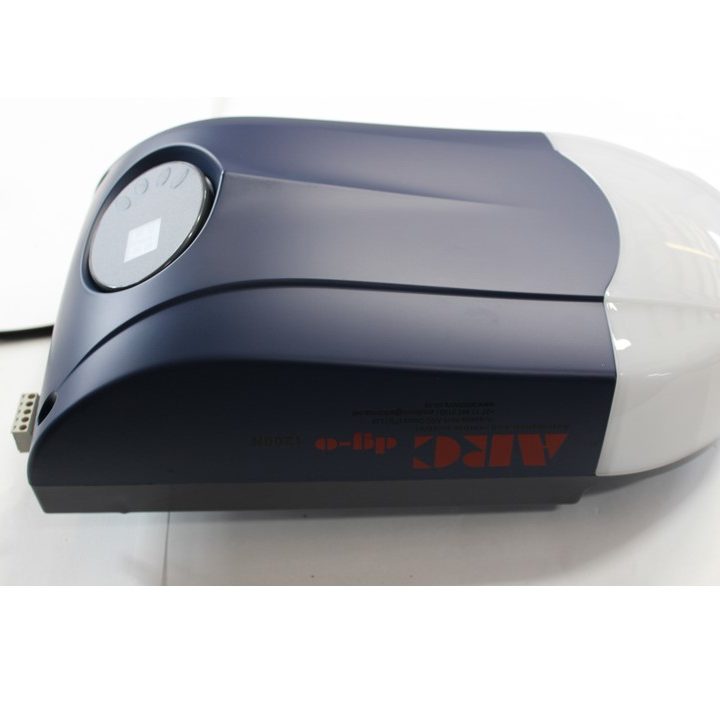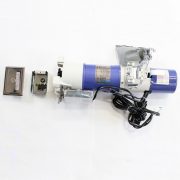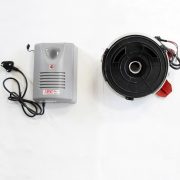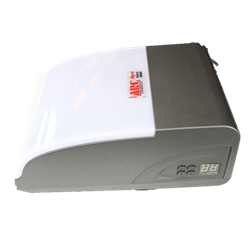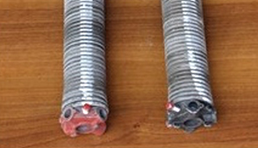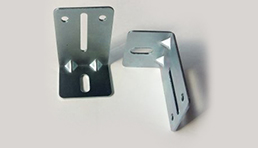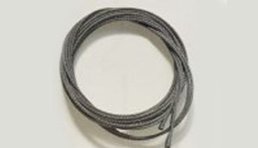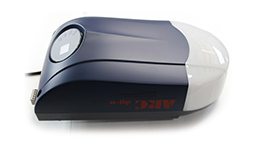Arc 1200 DG-o Motor
Arc Industrial Motor
Arc Venite Roll-up Motor
Arc 1200 Forte Motor

The garage door and opener are not toys.

Adults should keep the remote controls and push button wall controls out of reach of children.

These items should at least be 5 feet above the ground.

Never stand or walk under a moving garage door. Never try and exit a garage while the door is moving – always make sure to keep the door in view until the door is fully closed for safety purposes.

Keep your fingers and hands away from door sections when it is closing or opening to avoid possible injury.

Keep the garage door properly maintained to keep it operating safely.

Remember that the operating systems uses electricity, which can electrocute or cause severe bodily harm when not handled properly. Please ensure to service regularly.

NEVER attempt to repair a garage door’s springs or cables. These items are under extreme tension and can cause severe injuries or death. These items should be repaired and services by a trained service technician.

When someone has backed into the garage door with a vehicle, it is best to have the door inspected by a trained service technician to ensure safety and proper functioning.

It is important to always keep your door functioning properly. These tips might help you to do a proper inspection at home.

Annual maintenance by a trained service technician is recommended.

Look and listen – it is very important to observe your garage door in action every time you use it. Look if it is moving smoothly or jerky in places. Does it operate silently or does it make noises?

Tighten up the hardware – Because the garage door moves up and down a lot, it is important to examine and tighten all roller brackets and bolts with a socket wrench.

Inspect and replace the rollers – Rollers need to be inspected at least twice a year and is recommended to be replaced every seven years.

Replace the weather-stripping – if the strips are brittle or cracked, replace them right away to keep the seals working properly and keep natural elements out of your garage.

Annual maintenance by a trained service technician is recommended.

Check the cables – NEVER tinker with the lifting cables of a door, as they have enough force to cause severe bodily harm. But you can check the condition of the cables and if they seem in a bad condition, call a trained service technician.

Clear the tracks – Make sure the tracks of your garage door are free from debris and other items at all sides.

Groom your garage door – Never forget to examine the door itself.
Timber doors can get water damage or crack. Steel doors needs to be washed regularly with a mild all-purpose cleaner.

Lubricate all moving parts – Garage door parts needs to be lubricated – doing this will add years to your system.
Different tests to complete
Monthly balance test
With an automatic opener system, you need to test the balancing. Close the door and disconnect the automatic opener; lift the door manually. It should lift smoothly with little resistance and remain fully open. If it is difficult to open and does not remain fully open, the door may be out of balance and should be serviced by a trained service technician.
Monthly reversing mechanism test
With an automatic opener system, open the door completely, lay a piece of wood on the floor in the center of the garage opening where the door would touch the floor. Push your transmitter button or wall button to close the door; if the door touches the wood and reverses, it is working properly. If it does not reverse, your door should be serviced by a trained service technician.
Monthly infrared eye test
With an automatic opener system, open the door completely. Push your garage door opener transmitter or wall button to close the door. Wave a long object (broomstick or other item) in front of one of the door eyes to “breaks the beam”. The door should now reverse, if it does not reverse and reopen, pull the item out of the door path so that it closes. Now clean the eye of the door, and repeat the test. If it still does not work, your door should be serviced by a trained service technician.
Monthly force setting test
With an automatic opener system, open the door completely, then push the door opener transmitter or wall button to close the door. As the door is closing, hold up the bottom of the door with your hands outstretched and stiff. If the door does not stop, please pull your hands away immediately and call a trained service technician.
Semi-annual Lubrication
Apply a small amount of spray lubricant to the door’s hinges, rollers and tracks.
Five indications to look out for:
01
The door is not operating freely
02
The door is noisy and/or skew
03
The manual lock does not operate properly or at all
04
The door does not stay up in the open position
05
The motor is noisy or runs but the door does not lift
How to look after automation and accessories
Springs
Springs are high tension objects which need to be handled with a lot of caution. They are best maintained by a trained service technician. If the springs are making a noise but working perfectly, you can lubricate the spring with a spray (Q20 for example). Any other issues please speak to your technician.
All brackets + springs
The brackets and rollers need to be checked and tightened if they become loose. All your rollers and hinges should be stable and tight. If you are unable to tighten them yourself, contact your trained technician.
Cables
Visually inspect the cables that attach the spring system to the bottom brackets on both sides of the door. Due to the high spring tension, these cables should be replaced by a trained service technician to make sure no injuries happen.
Motors
Always approach all motors with caution. Motors are electric operated systems, meaning they can shock you causing severe injuries or death if not installed and maintained properly. All maintenance should be carried out by a suitably qualified technician.
DG Motor Do’s and Don’ts:
- Do make monthly inspections and testing part of your monthly routines.
- Do make sure your operator has an obstacle setting feature. If not, it might be time to replace it.
- Don’t disengage the door opener to manual operation with children/people or any other object (including motor vehicles) within the doorway.
- Do make sure that you are fully aware of how to disengage and re-engage the motor when the power fails.
- Don’t let children play with or around the motor and/or garage door and all its components.
- Do clean and lubricate the motor shaft with the recommended grease twice a year.
How to take care of Steel Sectional Doors
Most of our steel sectional doors come with a 1-year guarantee from its manufacturers. That said, we still highly recommend that you clean and maintain your garage door to make sure it lasts as long as possible.
DG’s steel maintenance tips:
- You can wash your garage door by using mild soap and a soft vehicle brush.
- If you regularly wash and clean your garage door, you’ll get rid of the built-up of the harsh elements and filth that can damage your door.
- If you live in a coastal area your garage doors will be exposed to more corrosives. Cleaning your steel sectional doors more regularly will improve the condition of your door and decrease the chances of damage to the steel and other parts of your system.
- It is important to stay away from aggressive cleaners or compounds on or around your garage door.
- For any other damages to the steel that you could not maintain with regular cleaning, please contact a trained service technician.
How to take care of Timber Sectional Garage Doors
Timber is a beautiful natural fiber that can be used to build extraordinary garage doors. It is important to always keep your timber door maintained and treated to ensure your door stays in good nick. Remember natural materials can expand and contract, so make sure you know how to spot and treat potential timber problems as soon as possible.
Why does wood expand and contract?
The cells within trees expand to absorb moisture from its environment. As soon as the water evaporates the wood will contract back to its original size. Even after wood has been manufactured into timber pieces which are used in the garage doors, the wood will still expand and contract when coming in contact with water. This is why wood sealers and proper treatments like Doors Galore Wood Care Products [insert link] are necessary.
How to identify and treat timber problems:
Rotten woods
This is one of the most common problems on sectional timber garage doors which are often neglected in maintenance guidelines. If the wood starts to turn black and disintegrate it means moisture has been left there too long. Sand down the affected area to remove as much of the dead wood as possible. In fact, we recommend sanding down the whole door. If the damage is too intensive that sanding it down does not help, it is best that a trained service technician takes a look at the issue.
Cracked and fading woods
Cracked and faded woods are usually due to extreme exposure to UV rays and dry climates. Constant usage, being neglected with no maintenance and treatments can also add to these stressors. To treat this, and prevent further cracking of the wood, suitable wood sealers can be applied to treat the doors. You have a choice between plain sealer or tinted sealers available in stores. Previously painted or varnished doors will need to be sanded down. Or you could prepare them by them rubbing down with fine steel wool and mineral turpentine to remove all traces of all previous coatings before applying your new exterior sealers.
NB to remember: All the above issues can be prevented by regular treatment of your timber sectional garage door, as well as your monthly and annual inspections.
Previously Painted or Varnished Doors
Cracked and faded woods are usually due to extreme exposure to UV rays and dry climates. Constant usage, being neglected with no maintenance and treatments can also add to these stressors. To treat this, and prevent further cracking of the wood, suitable wood sealers can be applied to treat the doors. You have a choice between plain sealer or tinted sealers available in stores. Previously painted or varnished doors will need to be sanded down. Or you could prepare them by them rubbing down with fine steel wool and mineral turpentine to remove all traces of all previous coatings before applying your new exterior sealers.

